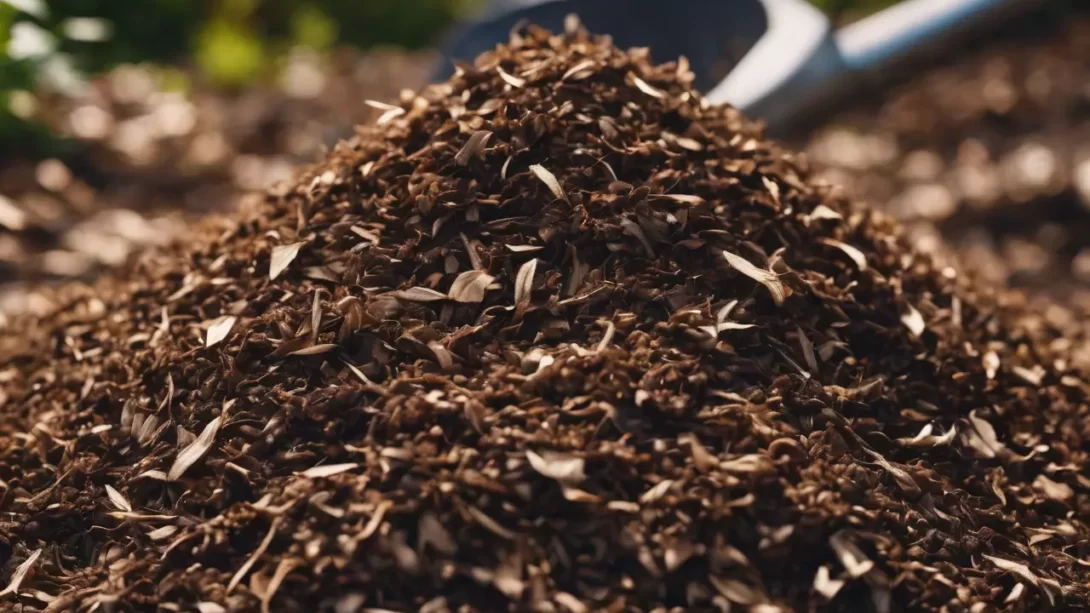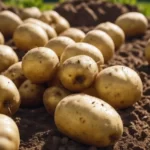Mulching is a fundamental practice in gardening, serving various purposes like moisture retention, temperature control, and weed suppression. Over time, however, mulch breaks down and loses its efficacy, leading to the inevitable question: what should one do with old or spent mulch? This article explores the various ways gardeners can manage old mulch, highlighting sustainable practices that benefit both the garden and the environment.
Mulch Lifespan
Different types of mulch have varying lifespans, which is crucial in deciding when to replace or recycle them. Organic mulches, such as wood chips, straw, or leaf litter, decompose over time, enriching the soil with nutrients. These typically need replenishing every one to three years. Inorganic mulches like rubber or stones last much longer but don’t offer the same soil-enhancing benefits.
The signs indicating it’s time to refresh mulch include noticeable thinning, discoloration, or a significant reduction in its effectiveness in weed control or moisture retention. If the mulch has compacted over time, it might also impede water infiltration, signaling a need for replacement.
Benefits of Recycling Old Mulch
Recycling old mulch is both environmentally friendly and beneficial for your garden. Old, decomposed mulch can still play a vital role in enhancing soil structure and fertility. By breaking down further, it adds organic matter to the soil, improving its texture, nutrient content, and water-holding capacity.
Moreover, recycling mulch reduces waste and can be cost-effective. Instead of disposing of old mulch and purchasing new, gardeners can repurpose it, contributing to a more sustainable gardening practice. This approach not only conserves resources but also supports a natural cycle of growth and renewal in the garden ecosystem.
Methods for Recycling Old Mulch
One effective way to recycle old mulch is by incorporating it into the soil as a conditioner. This method is particularly beneficial for organic mulches that have begun to break down. By tilling or mixing the old mulch into the soil, it can continue to decompose and enrich the soil with organic matter, improving its structure and fertility. This process is especially valuable in gardens with poor or compacted soil, as it can enhance aeration and nutrient availability for plants.
Another approach is using old mulch as a base layer beneath new mulch. This method is especially useful when the old mulch is still somewhat intact but not as effective visually or in weed control. Layering new mulch on top of the old one maintains the aesthetic appeal and functionality of your garden beds while allowing the old mulch to continue decomposing and feeding the soil.
Old mulch can also find new life in other areas of the garden. For instance, it can be used to create paths or walkways, offering a natural and rustic look while suppressing weeds and keeping your feet clean and dry. Additionally, it can be employed in less visible areas of the garden for weed suppression or to protect soil in fallow beds.
When to Dispose of Mulch Instead of Recycling
While recycling mulch is often the preferred option, there are circumstances when it’s better to dispose of it. If the mulch is infested with pests or diseases, recycling it could spread these problems throughout your garden. In such cases, removing and disposing of the affected mulch is crucial to protect plant health.
Composting is a viable option for disposing of old mulch, particularly if it’s organic. However, be cautious with mulch that may contain weed seeds or disease pathogens. These should not be added to a compost pile unless you’re certain that the composting process will reach temperatures high enough to kill them.
If you can’t compost the old mulch and it’s not suitable for recycling, consider environmentally friendly disposal options. Some communities offer green waste recycling programs, which can handle old mulch and turn it into compost for community use. Always avoid burning mulch, as it can release harmful chemicals and is generally not an environmentally sustainable practice.
Preparing the Area for Fresh Mulch
Before introducing new mulch to your garden, it’s essential to properly prepare the area. Start by gently removing the top layer of old mulch, especially if it’s heavily compacted or showing signs of mold or pest infestation. Be careful not to disturb the underlying soil structure or root systems of nearby plants.
Once the old mulch is cleared, take the opportunity to assess the soil condition. If the soil appears compacted or deficient in nutrients, this is an ideal time to amend it. Adding compost or a balanced slow-release fertilizer can rejuvenate the soil, making it more hospitable for plant growth.
After amending the soil, level the area to ensure even coverage and to prevent water pooling. This step is crucial for maintaining proper drainage and preventing root rot in plants. Once the area is prepared, you can apply the new layer of mulch, spreading it evenly and ensuring that it’s not too thick around the base of plants to prevent moisture and air blockage.
Conclusion
Managing old mulch is an integral part of sustainable gardening. By recycling where possible, gardeners contribute to the health of their soil and the broader environment. When recycling is not an option, proper disposal ensures the continued well-being of the garden ecosystem.
Remember, mulch is more than just a decorative element; it plays a critical role in soil health and plant growth. Whether you’re recycling old mulch or preparing for a fresh layer, thoughtful mulch management can lead to a more vibrant, productive, and sustainable garden. By following these practices, gardeners not only enhance the beauty of their outdoor spaces but also support the natural cycles of growth and renewal that define a thriving garden.




